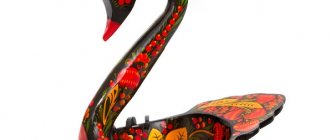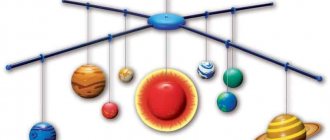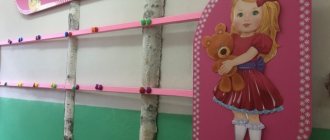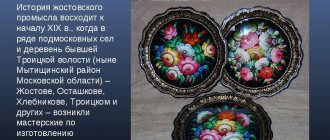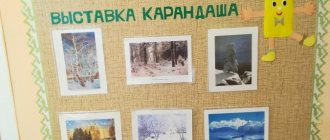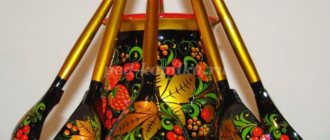What is folk art?
Folk art, which includes Khokhloma, is a way of expressing the character of the people and their culture. It represents the totality of the works of the people, their artistic activities. In essence, folk art is a type of art created by the people themselves and for the people.
The diversity of people's creative works is primarily related to its cultural values. Each nation, as a single large group, has a specific ethnic group, within which there are myths, fairy tales, songs, dances, as well as decorative items unique to it.
Folk art differs from other artistic activities in that it is firmly connected with the worldview of a particular people. It can be noted that in each country and region, the creativity of the population has a different style, original colors and forms. Getting to know the creativity of your people allows you to better understand our origins.
What is Khokhloma and its distinctive features
Khokhloma is one of the folk crafts of Russia. The background of the products is always black, but despite this, all objects painted in the Khokhloma style look very bright. A mandatory element of painting is the presence of gold. Other traditional features of Khokhloma include images of berries, branches and leaves, as well as birds, animals and even fish.
In Rus', wood played a very important role. It was used to build good-quality huts, pieces of furniture, and dishes. Among the ordinary dishes made by artisans, there were special serving items that were served at feasts and royal receptions. They were colored with a special mercury-containing natural material called cinnabar. The top of the dishes was covered with gold. The honey-golden hue was achieved by repeated processing in the oven at high temperatures. This color gave the wooden utensils a massive appearance.
Initially, production was established at monasteries in Rus'. For example, among the majority of artisans of the Trinity-Sergius Lavra, peasants from some Trans-Volga villages worked. It is believed that Khokhloma developed thanks to the Old Believers, immigrants from other lands who were engaged in the crockery industry.
Summary of a drawing lesson in the preparatory group: Khokhloma
Summary of a drawing lesson in the preparatory group “Golden Khokhloma.
Painting a plate based on Khokhloma painting” (made using non-traditional techniques: wax pencils and watercolors). Author of the work: Kokorina Tatyana Nikolaevna teacher of additional education in fine arts. MBDOU No. 202 Kindergarten of a general developmental type “Fairy Tale” Description: this summary will be of interest to teachers of senior and preparatory groups, teachers of additional education in art activities, as well as simply creative people. Goal: expanding knowledge about the folk craft of Khokhloma painting. Objectives: - to form children’s understanding of the appearance of dishes in ancient times; — talk about the appearance of Khokhloma painting; — learn to consistently perform work using non-traditional techniques; — learn to beautifully place a pattern over the entire surface of the plate; - promote the development of aesthetic taste; — promote the development of fine motor skills of the hands, through drawing small curls; — to cultivate interest in Russian folk crafts and pride in our craftsmen; — cultivate interest in drawing through the use of unconventional techniques. Preliminary work: studying dishes and folk crafts in classes on the world around us. Methodological techniques: story, conversation-dialogue, visual material, practical work. Progress of the lesson: Teacher - Every day we use different utensils: kitchen, dining, tea. These dishes are metal, porcelain, glass. There are dishes that we use every day, and there are beautiful holiday sets that are taken out only on holidays to set the table. Do you know how the dishes appeared? Dishes appeared a very long time ago. At first, ancient people used tree bark to, for example, scoop up water or nut shells. They tried to hollow out vessels from stone and wood. Sea shells were used as spoons; they were convenient for scooping up food. Gradually the dishes were improved. People learned to make dishes from clay and fire them.
And of course, since ancient times, people have tried to make dishes not only convenient for use, but also beautiful, therefore, from ancient times, various designs began to be applied to dishes. The first patterns were simple, they were made with thin wooden sticks, these were geometric shapes, people, animals.
So wooden dishes appeared, clay dishes - ceramic, and later people learned to make porcelain, which we use now. Wooden utensils still exist today, but now they are more often used to decorate the interior. Beautiful, bright, it stands on a shelf or in a closet and pleases the eyes with its unique pattern. Do any of you know what this dish is called? Children - Khokhloma.
Educator - Correct. This wooden dish is painted with floral patterns. What does vegetable mean? Children are grass, flowers, berries. Educator - Yes, these are all kinds of plants: grass and leaves, berries, flowers with beautiful curls. According to legend, this painting was created by a talented master, icon painter Andrei Loskut. He worked for the king and he generously rewarded him for his work. But the master loved freedom most of all. One night he left the royal court and went to live in the forest. Andrey wanted to paint not only icons. He dreamed of creating something simple, necessary and at the same time beautiful, like the native nature around him. This is how the first wooden utensils appeared. And since the master lived in the forest, he began to paint it with flowers, berries, leaves, and twigs. The fame of the amazing master reached the surrounding lands. Many came to him to see this dishes, some stayed forever, wanting to learn how to create the same wonderful products. Andrey Loskut passed on the secrets of his skill to his fellow villagers; his skill has been preserved, pleasing the eyes and souls of people to this day. And since all this was in the village of Khokhloma, the painting began to be called Khokhloma. This painting is distinguished by obtaining a golden color without the use of precious metal. That’s why they often say “golden Khokhloma”.
Now we will paint our plates based on Khokhloma painting. For this we will need: - yellow and red wax pencils; - black watercolor; - wide brush No. 5 or No. 6. 1.first, using a yellow wax pencil, draw three leaves at the bottom of the plate.
2. Using a red wax pencil, we draw three large strawberries over the yellow leaves.
3.Draw droplet leaves between the berries with a yellow pencil from smallest to largest.
4.Draw curls between the lower leaves
5.add small flowers and curls at the top.
6. Paint the entire plate with black watercolor.
The plate painting based on Khokhloma painting is ready.
We recommend watching:
Unconventional drawing technique Blotography. Master class Summary of GCD in the senior group Khokhloma painting. Master class for 2nd-3rd grade students Summary of GCD in the senior group. Golden Khokhloma
Similar articles:
Painting a cutting board. Khokhloma
Painting a Khokhloma plate
Drawing autumn leaves, grades 1-2
Summary of a lesson in the preparatory group of a kindergarten on the topic Vitamins
Summary of the direct educational activity “Music” in the preparatory group
Varieties of Khokhloma
There are several types of painting in the Khokhloma style. They differ in the method of application and image on wooden objects. Based on the type of application, Khokhloma is divided into the following types:
- background - the design is made on a plain main background, and the ornament is made with gold paint;
- upper – applying a pattern to a ready-made field.
The technique has various painting methods. The most complex technique is applying painting under the background. Initially, the contours of the pattern are applied to the wooden blank, and then some parts begin to be painted over with a black or red background color. After applying the background layer, they begin to make patterns and other complex details.
"Gingerbread"
The simplest method is called “Gingerbread”. In the center of the product there is an image of a geometric figure, for example, a rhombus or a square. Inside it is supplemented with sun, climbing plants, and herbs.
"Grass"
“Travka”, or herbal painting, is applied in abrupt strokes. Leaves are painted with large strokes, blades of grass or dew drops are used with smaller strokes. This element of top painting allows you to fill the entire surface of the product with an openwork pattern. This is one of the most difficult types, which requires patience and special attention from the master.
"Berry"
Another technique called “Berry” is very reminiscent of “Grass”. However, the style looks richer and more decorative than the previous one. It is based on an interweaving of large berries and herbs. As a rule, masters depict strawberries, gooseberries, grapes, and among flowers - chamomile and bell.
"Kudrins"
“Kudrina” is characterized by a certain ornate floral pattern. In this case, the ornament is made with gold paint. The peculiarity of application is to work with a very thin brush.
Abstract of OOD on drawing in the preparatory group of the kindergarten “Khokhloma painting”
Summary of organized educational activities
in drawing in the preparatory group “Khokhloma painting”
Author: Alena Sergeevna Nikolenko, teacher of MKDOU “Podgorensky kindergarten No. 1”
Integration of educational areas:
“Cognitive development”, “Artistic and aesthetic development”, “Speech development”, “Physical development”, “Social and communicative development”.
Target:
introduce children to the Khokhloma painting patterns.
Objectives:
Educational: - Continue to introduce the art of Khokhloma. — Replenishment of vocabulary. Developmental: - Continue learning to draw a pattern in a certain sequence (border, branch, berries, curls). — To develop the ability to combine in a pattern the colors characteristic of Khokhloma painting: black, red, gold (ochre). — Develop children's creative abilities. Educational: - To cultivate accuracy and the ability to objectively evaluate children's work. -Cultivate interest in arts and crafts through artistic activities.
Demo material:
an easel, a table with various Khokhloma dishes, illustrations, objects with Khokhloma painting, preparations for laying out the composition - cardboard pots, a brush, gouache, a napkin, a stand for brushes, a jar of water.
Handout:
Cardboard blanks, gouache, fine-tipped brush, jar of water, napkin.
Preliminary work:
Examination with children of illustrations about Russian huts, clothing, and life.
Learning proverbs, poems, folk games. Introducing children to Khokhloma paintings. We held conversations and drew Khokhloma patterns. OOD move:
- Guys, look, I have a magic box, the postman brought it to us.
- Let's see what's inside this box? - What is this? - That's right, guys, these are puzzles, you need to put them together to find out what we will be learning about today. Didactic game “Assemble puzzles”
- What did you get?
— How can I call all this in one word? (dishes)
- Today we will talk about unusual dishes. I invite you to the “dishes exhibition”. -Are you ready to come with me?
(The music “Fair” is playing. The group has organized an exhibition of Khokhloma products, illustrations depicting Khokhloma dishes.)
- Look guys, how beautiful it is around! It was as if we had entered the kingdom of Golden Khokhloma! - And what is there: Ladles, cups, spoons and wonders - ladles. You'll see, don't rush. Here the grass curls and flowers of unprecedented beauty! They shine like gold, as if bathed in the sun.
— Guys, do you know how Khokhloma painting appeared? — I’ll tell you the legend of how Khokhloma painting appeared. — There lived in ancient times a master icon painter. The king highly valued his skill and generously rewarded him for his work. The master loved his craft, but most of all he loved a free life and therefore, one day, he secretly left the royal court and moved to the deep Kerzhen forests. He built himself a hut and began to do the same thing. He dreamed of an art that would become familiar to everyone, like a simple Russian song, and so that the beauty of his native land would be reflected in it. This is how the first Khokhloma cups appeared, decorated with lush flowers and thin branches. The fame of the great master spread throughout the land. People came from everywhere to admire his skill. Many people built huts here and settled nearby. Finally, the master’s fame reached the formidable sovereign, and he ordered a detachment of archers to find the fugitive and bring him. But popular rumor flew faster than the archers’ feet. The master learned about his misfortune, gathered his fellow villagers and revealed to them the secrets of his craft. And in the morning, when the royal envoys entered the village, everyone saw the miracle artist’s hut burning with a bright flame. The hut burned down, and no matter how hard they looked for the master himself, he was nowhere to be found. Only its colors remained on the ground, which seemed to have absorbed both the heat of the flame and the blackness of the ashes. The master disappeared, but his skill remained, pleasing the eyes and souls of people to this day. And since all this was in the village of Khokhloma, the painting began to be called Khokhloma. — Let's admire the products of Khokhloma masters. -What do you see? Describe verbally what kind of dishes? ( beautiful dishes, bright, joyful, rich, colorful
) - What material is this dish made of?
(and from wood
) - Do you know why Khokhloma is called golden?
( On all products there is a gold color: on one item there is a background, on another there are leaves, berries, flowers in patterns
).
— Take the Khokhloma dishes in your hands and look at them carefully. — What colors do artists use in painting? ( Red, black, yellow and green may be present
).
— What colors does the artist use for the background? ( Red, yellow, black
) - Name the elements of the pattern in Khokhloma painting?
( Curls, blades of grass, droplets, icicles, leaves, berries
).
— What kind of berries do the masters draw? ( Raspberries, strawberries, mountain ash, cherries, gooseberries, lingonberries
).
- Well done boys. - Guys, who can tell me what a fair is? - What do they do at the fair? — That’s right, at the fair they sell products, buy goods, have fun, sing songs, play games. “I invite you to play the Russian folk game “Dawn, Zaryanitsa - Red Maiden” at our fair. Russian folk game “Zarya, zaryanitsa - red maiden.”
- Well done boys.
Game “Find an element of Khokhloma painting”
-
In front of you are elements of paintings, find the elements of Khokhloma painting and name them. - Well done, you all completed the task.
— Guys, guests from other countries come to our country and everyone wants to take some kind of souvenir from Russia as a souvenir. Guests go to special stores - art salons and buy Dymkovo horses, painted matryoshka dolls and, of course, elegant Khokhloma products!
Through the mountains and seas, the whole world admires - Oh yes, a Russian souvenir! Oh, what a miracle the colors are! And fairy tales and Khokhloma’s smiles roam the world.
— Guys, I suggest you open your own art salon so that our guests can also choose a souvenir as a keepsake. But first, we need to become artists - masters and paint the dishes with the Khokhloma pattern. - Do you agree?
Productive activity
— You have silhouettes of dishes on your tables.
—Where will you start your work? ( From the background of the product and from the border at the top and bottom
).
— What element of Khokhloma painting will you paint next? (The curl is the main element of Khokhloma painting, because all other elements are painted on it
).
- What will we draw on the curl first, what then? ( First large elements: leaves, berries, then small elements: droplets, grass, curls
). - Well done guys, you know everything like real masters.
- Now, let's go to the art workshop and get to work! Surprise your guests with Khokhloma patterns! • Sedges are the simplest element of the pattern. It is performed by lightly moving the tip of the brush from top to bottom.
•
Blades of grass are strokes with a slight smooth thickening.
•
Droplets are drawn by applying the brush to the paper.
•
The antennae are drawn as a continuous line of equal thickness, twisted into a spiral.
•
Curls are performed with light pressure in the middle of the element.
•
The bush is the most complex element; all elements of the herbal ornament can be involved in its image.
(Children perform productive activities to the music “Russian Melody”)
- Well done boys! You have made wonderful Khokhloma dishes. - Let's put it in our art salon. (An exhibition of children's works is being organized.)
- Admire the wonderful work we have done.
(Children look at the work, the teacher reads a poem).
Like the sorceress Firebird, the sorceress-craftswoman, Golden Khokhloma, does not go out of her mind. Both rich and beautiful, I am glad to see the guest from the bottom of my heart. Cups, bowls and ladles. And what’s missing here: Bunches of fiery rowan trees, poppies of sunny summer, and daisies of meadows. She absorbed everything, like a memory: The dawn of red rays And the patterned ornament of Ancient Suzdal brocade. The leaves turn red without thinning, from the breath of winter. Enters the kingdom of Berendey into the world of magical Khokhloma.
- Well done, guys, we have created real Khokhloma dishes that are so pleasing to the eye. - Thank you guys for such beauty!
How and when did Khokhloma originate?
Archives show that beautiful painted dishes were first mentioned in 1659. It was then that a certain boyar named Morozov demanded to collect dishes of various sizes and tin craftsmen from the Trans-Volga lands. In those days, tin was used for gilding. Morozov at that time owned the village of Semenovskoye. In it, as well as in a neighboring village called Khokhloma, a craft for painting wooden products was formed.
The development of such a trade in Rus' was facilitated by the proximity of a large trade route (Volga) and the proximity to the fair - Makaryevskaya. The quality of the dishes was so high that their production was made the main industry for the residents, and the village of Khokhloma became a trading point where unique dishes with unusual designs were sold. After 1916, it was decided to open the School of Artistic Processing of Wooden Products. So Khokhloma received a new round of development.
Materials for painting and stages of preparation for painting
Wooden bases for painting are called “linen”. To make objects from wood, you need not only paint of different shades, but also special purified clay (wapa), which acts as a primer. Drying oil (linseed oil) is also necessary, the correct application of which determines the strength of the pattern.
The next stage is called tinning, which is performed with aluminum powder. It is intensively rubbed into the product, after which the objects acquire shine and are ready for further painting. The paints that the masters use in their work are only oil paints, and the brushes for applying the pattern are mainly squirrel paints.
Painting on household items
Wooden painted dishes “Khokhloma” are still popular today. This is quite a stylish interior decoration. In addition, dishes with Khokhloma patterns are environmentally friendly. Kitchen sets and individual utensils are in demand. They paint furniture, household appliances and even cars. Khokhloma was appreciated in the world of high fashion. Some elements of the design are used to create an entire collection of fashionable clothing.
Having objects decorated with Khokhloma painting in your home means appreciating the traditions of the Russian people. Khokhloma can decorate every home and bring comfort to the family hearth.
Notes on drawing in the preparatory group “Painting a board based on Golden Khokhloma”
Chernykh Ekaterina
Notes on drawing in the preparatory group “Painting a board based on Golden Khokhloma”
Goal: expanding knowledge about the folk craft of Khokhloma painting.
Tasks:
- to form children’s understanding of the appearance of dishes in ancient times;
— talk about the appearance of Khokhloma painting;
— learn to consistently perform work using non-traditional techniques;
— learn to beautifully place a pattern over the entire surface of the board;
- promote the development of aesthetic taste;
— promote the development of fine motor skills of the hands, through drawing small curls;
— to cultivate interest in Russian folk crafts and pride in our craftsmen;
— cultivate interest in drawing through the use of unconventional techniques.
Preliminary work: studying dishes, folk crafts in classes on the surrounding world, watching presentations “Such different and necessary dishes”, “Golden Khokhloma”.
Methodological techniques: story, conversation-dialogue, visual material, practical work.
Progress of the lesson.
Educator - Every day we use different utensils: kitchen, dining, tea. These dishes are metal, porcelain, glass. There are dishes that we use every day, and there are beautiful holiday sets that are taken out only on holidays to set the table. Do you know how the dishes appeared?
Dishes appeared a very long time ago. At first, ancient people used tree bark to, for example, scoop up water or nut shells. They tried to hollow out vessels from stone and wood. Sea shells were used as spoons; they were convenient for scooping up food. Gradually the dishes were improved. People learned to make dishes from clay and fire them.
And of course, since ancient times, people have tried to make dishes not only convenient for use, but also beautiful, therefore, from ancient times, various designs began to be applied to dishes. The first patterns were simple, they were made with thin wooden sticks, these were geometric shapes, people, animals.
So, wooden dishes appeared, clay dishes - ceramic, and later people learned to make porcelain, which we use now.
Wooden utensils still exist today, but now they are more often used to decorate the interior. Beautiful, bright, it stands on a shelf or in a closet and pleases the eyes with its unique pattern. Do any of you know what this dish is called?
Children: - Khokhloma.
Educator: - That's right. This wooden dish is painted with floral patterns. What does vegetable mean?
Children: - This is grass, flowers, berries.
Educator: - Yes, these are all kinds of plants: grass and leaves, berries, flowers with beautiful curls. According to legend, this painting was created by a talented master, icon painter Andrei Loskut. He worked for the king and he generously rewarded him for his work. But the master loved freedom most of all. One night he left the royal court and went to live in the forest. Andrey wanted to paint not only icons. He dreamed of creating something simple, necessary and at the same time beautiful, like the native nature around him. This is how the first wooden utensils appeared. And since the master lived in the forest, he began to paint it with flowers, berries, leaves, and twigs. The fame of the amazing master reached the surrounding lands. Many came to him to see this dishes, some stayed forever, wanting to learn how to create the same wonderful products. Andrey Loskut passed on the secrets of his skill to his fellow villagers; his skill has been preserved, pleasing the eyes and souls of people to this day. And since all this was in the village of Khokhloma, the painting began to be called Khokhloma. This painting is distinguished by obtaining a golden color without the use of precious metal. That’s why they often say “golden Khokhloma”.
Today we will paint our cutting boards based on Khokhloma painting.
For this we need:
— cutting board stencil;
- wax pencils yellow, red, green;
- black watercolor;
— wide brush No. 5 or No. 6;
- scissors.
1. First, use a yellow wax pencil to draw three leaves at the bottom of the board.
2. Using a red wax pencil, draw large strawberries over the yellow leaves.
3. Between the berries, use a yellow pencil to draw droplet leaves from smallest to largest.
4. Between the lower leaves we draw yellow and green curls.
5. Add small flowers and curls at the top.
6. Trace the board with a red wax pencil.
7. Paint the entire board with black watercolors.
8. Cut the board along the contour with scissors.
The painting of the board based on Khokhloma painting is ready.
We are organizing an exhibition of finished works for parents.
